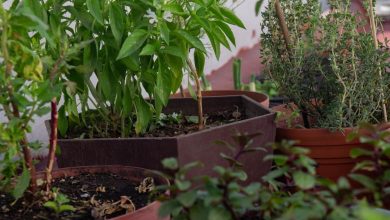How to Plan and Maintain a Rose Garden?

Roses are undoubtedly one of the most beautiful and beloved flowers in the world. Their vibrant colors and intoxicating fragrance make them a popular choice for gardeners of all levels of expertise. However, planning and maintaining a rose garden can be a daunting task, especially for beginners. In this article, we will provide you with some essential tips and guidelines to help you create and care for a stunning rose garden.
Choosing the Right Location
Before you start planting roses, it is crucial to select the right location for your garden. Roses require at least six hours of direct sunlight each day, so choose a spot that receives ample sunlight. Additionally, make sure the location has good air circulation to prevent the growth of fungal diseases. Avoid planting roses near large trees or other plants that could compete for nutrients and water.
Preparing the Soil
Once you have chosen the perfect location, it’s time to prepare the soil for planting. Roses thrive in well-drained soil that is rich in organic matter. Start by removing any weeds or grass from the area and loosen the soil with a garden fork or tiller. Add compost or well-rotted manure to improve the soil’s fertility and drainage. It is also recommended to perform a soil test to determine if any amendments are needed to adjust the pH level.
Choosing the Right Roses
There are various types of roses to choose from, including hybrid teas, floribundas, climbers, and shrub roses. Each type has its own growth habit and care requirements, so it’s essential to choose the right roses for your garden. Consider factors such as the available space, climate, and your personal preferences. Consult with local nurseries or experienced rose gardeners to select varieties that are well-suited to your specific growing conditions.
Planting the Roses
When planting roses, it’s important to give them enough space to grow and thrive. Dig a hole that is wide and deep enough to accommodate the roots of the rose bush. Place the rose in the hole, making sure that the bud union (the swollen area where the rose is grafted onto the rootstock) is level with or slightly above the soil surface. Backfill the hole with soil, firming it gently around the roots. Water the plant thoroughly after planting to settle the soil.
Watering and Fertilizing
Proper watering is crucial for the health and vitality of your rose garden. Roses require consistent moisture, especially during the hot summer months. Water deeply and thoroughly, making sure the water reaches the roots. Avoid overhead watering, as it can promote the growth of fungal diseases. Mulching around the base of the plants can help conserve moisture and suppress weed growth.
Fertilizing is also essential to ensure healthy growth and abundant blooms. Use a balanced rose fertilizer or a slow-release granular fertilizer specifically formulated for roses. Follow the instructions on the package for the correct application rate and frequency. Be cautious not to over-fertilize, as it can lead to excessive foliage growth at the expense of flowers.
Pruning and Deadheading
Regular pruning is necessary to maintain the shape and vigor of your rose plants. Prune in early spring before new growth begins, removing any dead, damaged, or crossing branches. Cut back the remaining canes to an outward-facing bud to encourage bushier growth and better air circulation. Deadheading, which is the removal of spent blooms, promotes continuous blooming throughout the season. Cut the stem just above a set of healthy leaves to encourage new growth.
Pest and Disease Control
Unfortunately, roses are susceptible to a variety of pests and diseases. Keep a close eye on your plants for any signs of trouble, such as aphids, black spot, or powdery mildew. Regularly inspect the leaves, stems, and flowers, and take immediate action if you notice any issues. There are many organic and chemical options available for pest and disease control, so choose the method that suits your preferences and needs.
In conclusion, planning and maintaining a rose garden requires careful consideration and proper care. By selecting the right location, preparing the soil, choosing the right roses, and following proper watering, fertilizing, pruning, and pest control practices, you can create and maintain a beautiful rose garden that will bring you joy for years to come. So roll up your sleeves, put on your gardening gloves, and get ready to immerse yourself in the enchanting world of roses.




